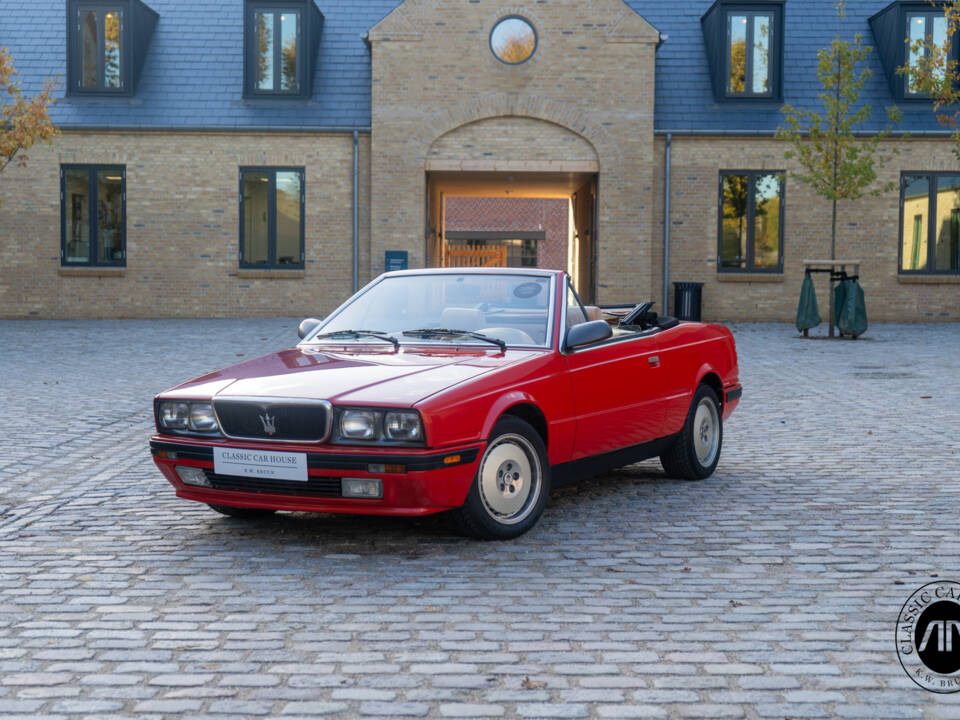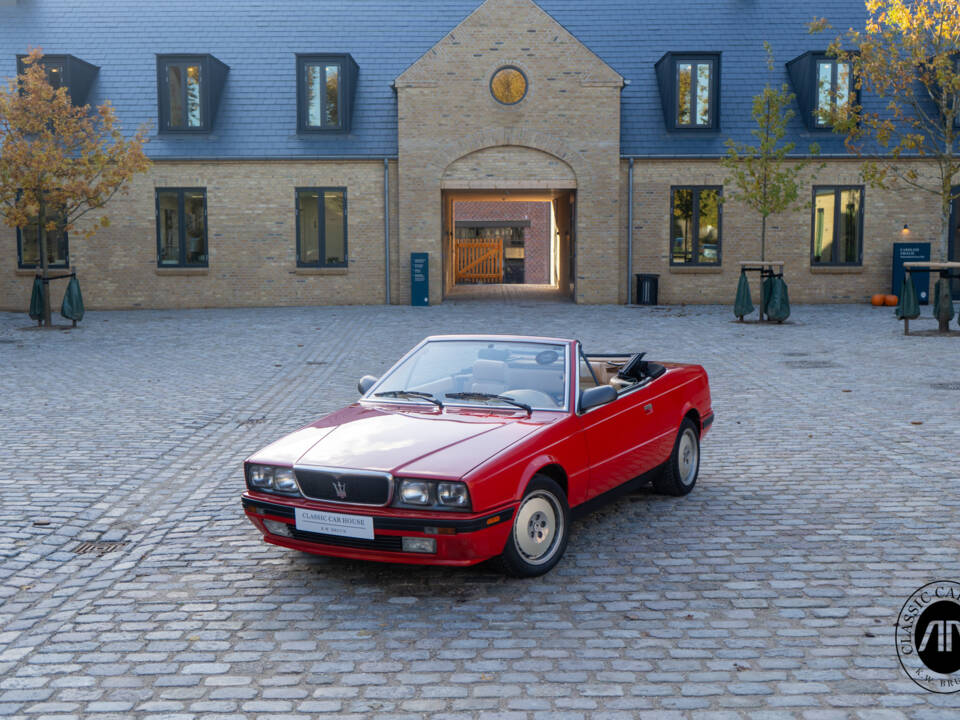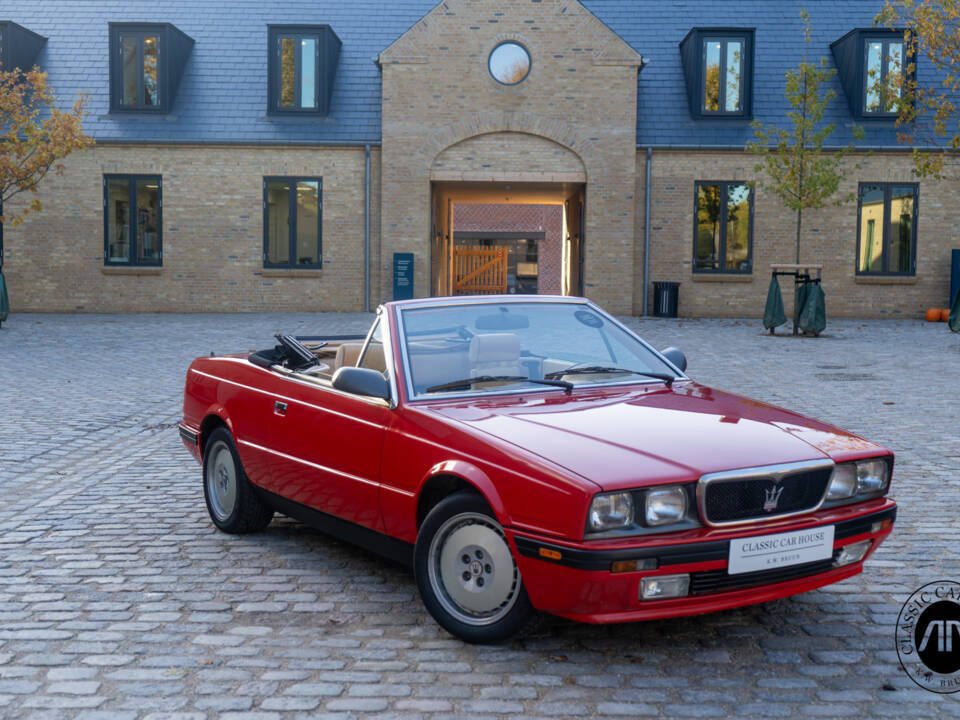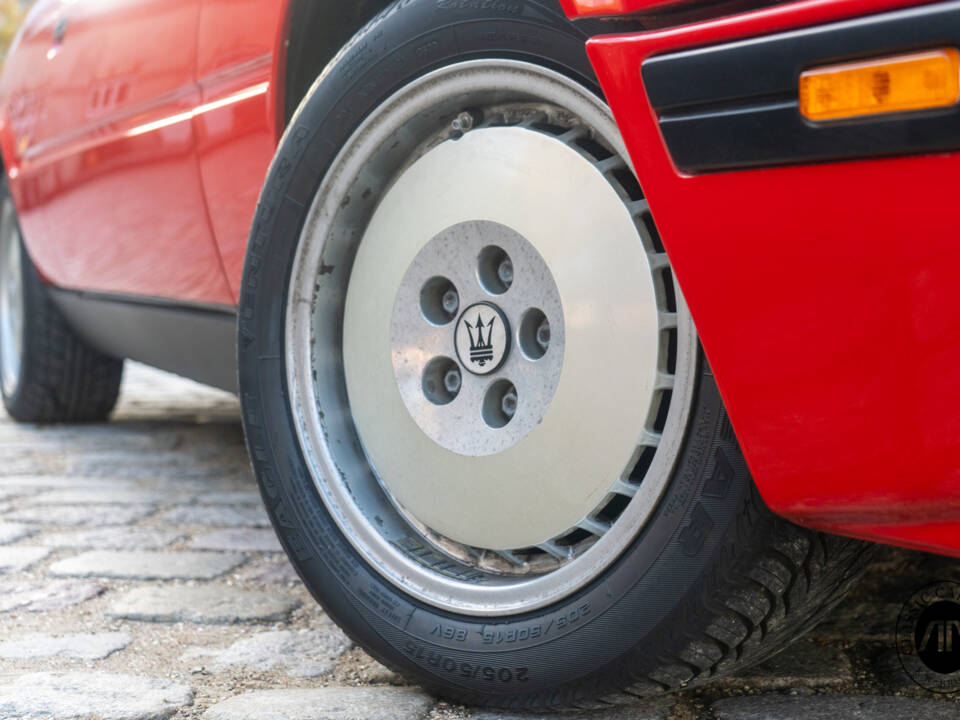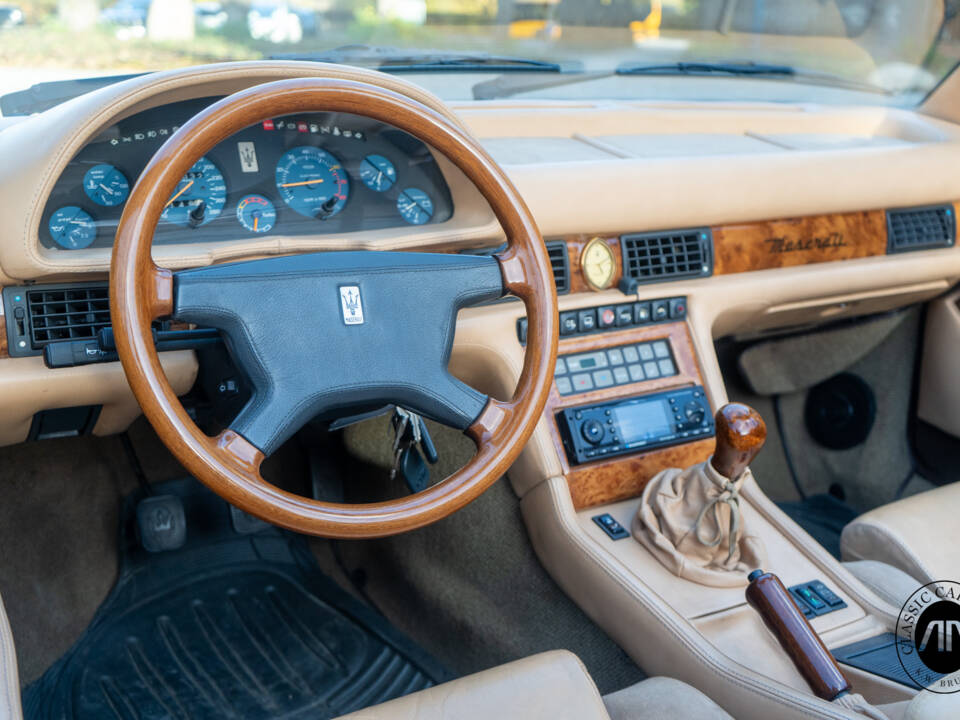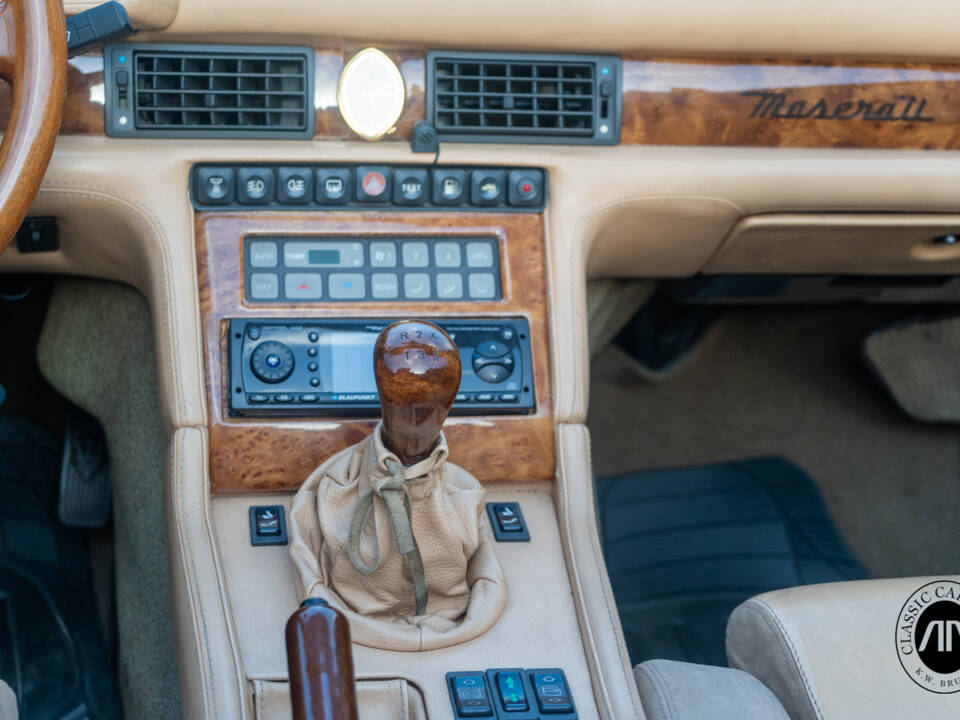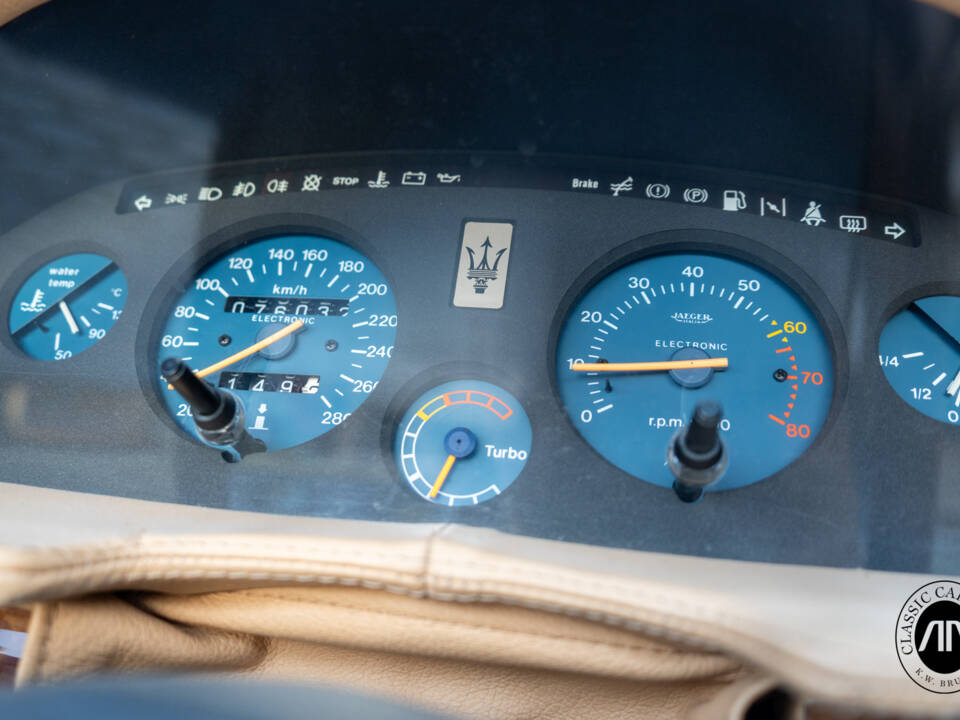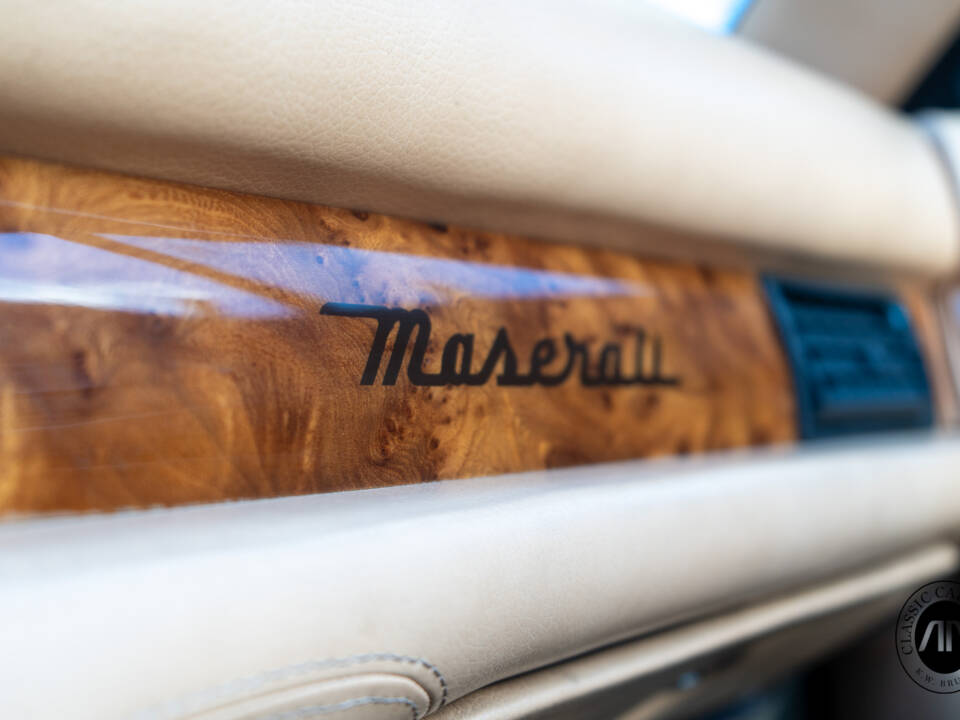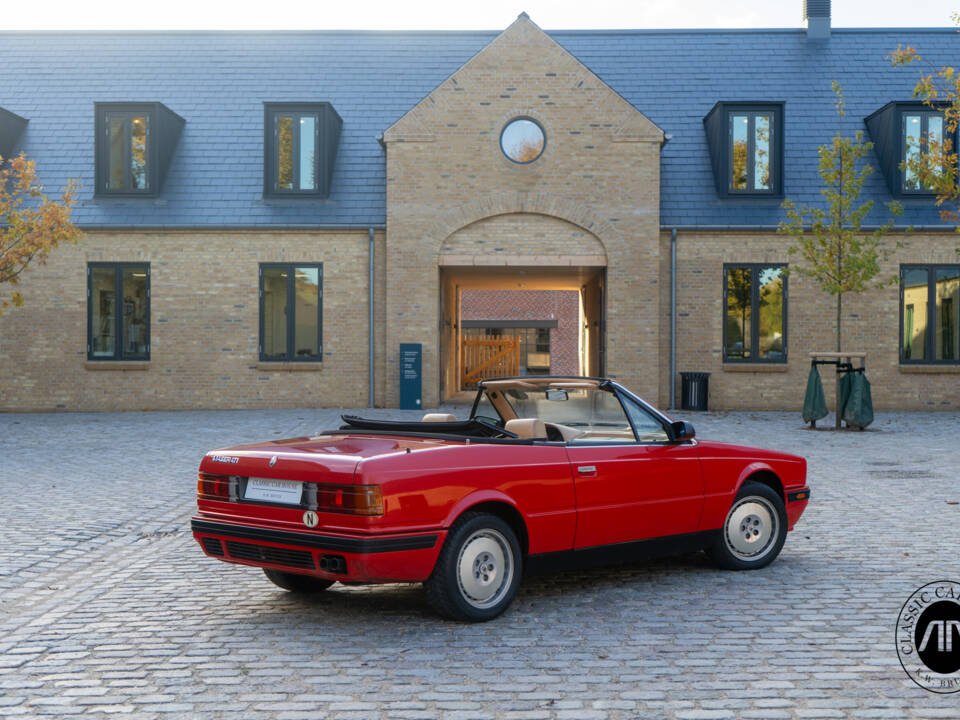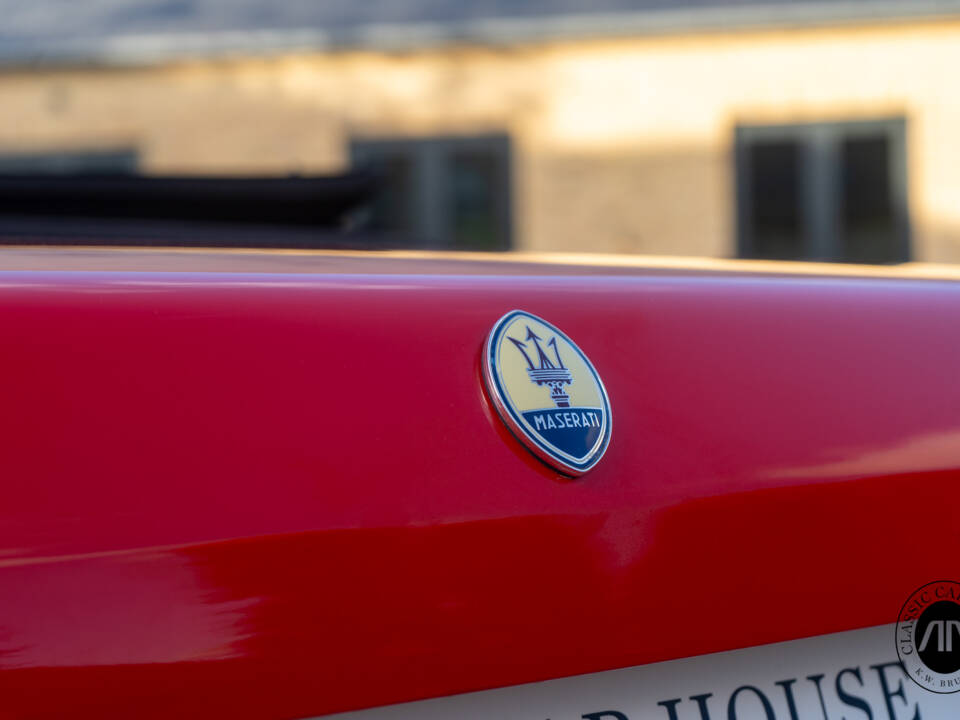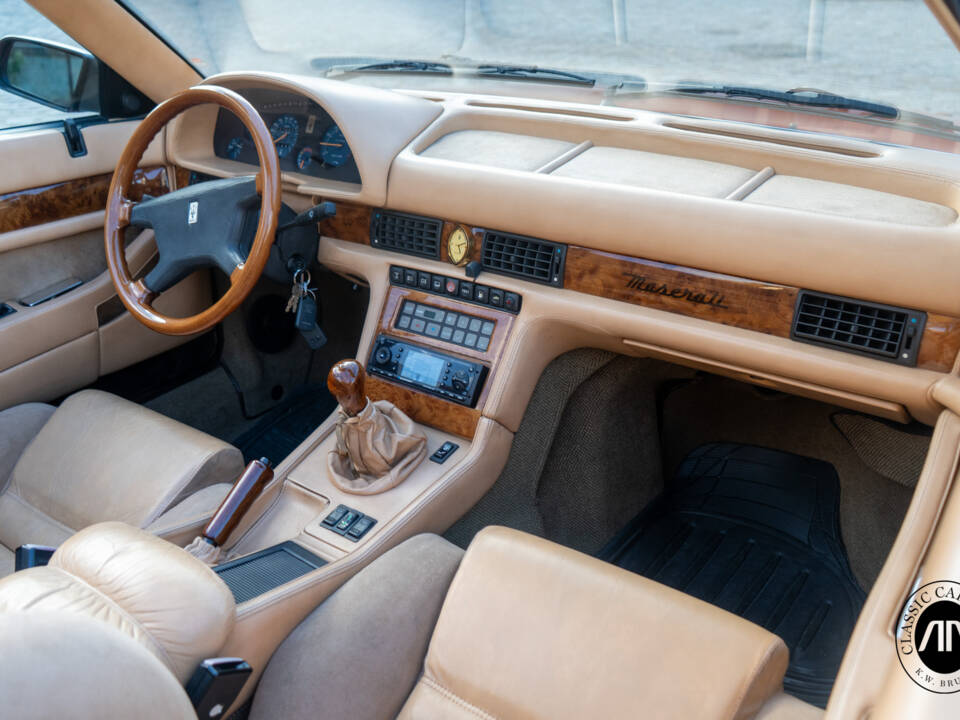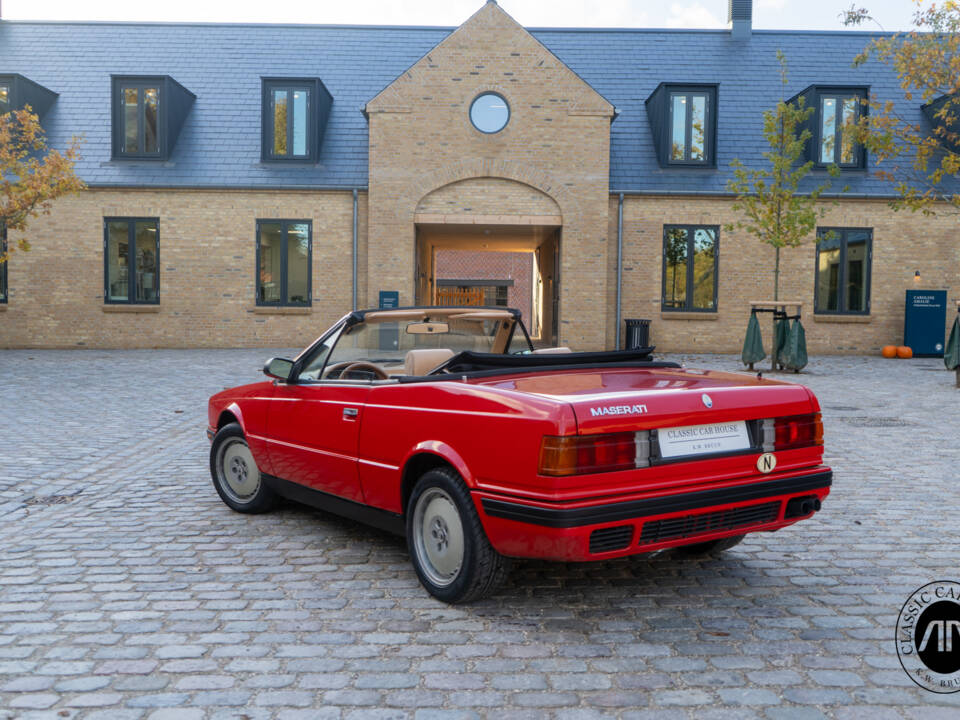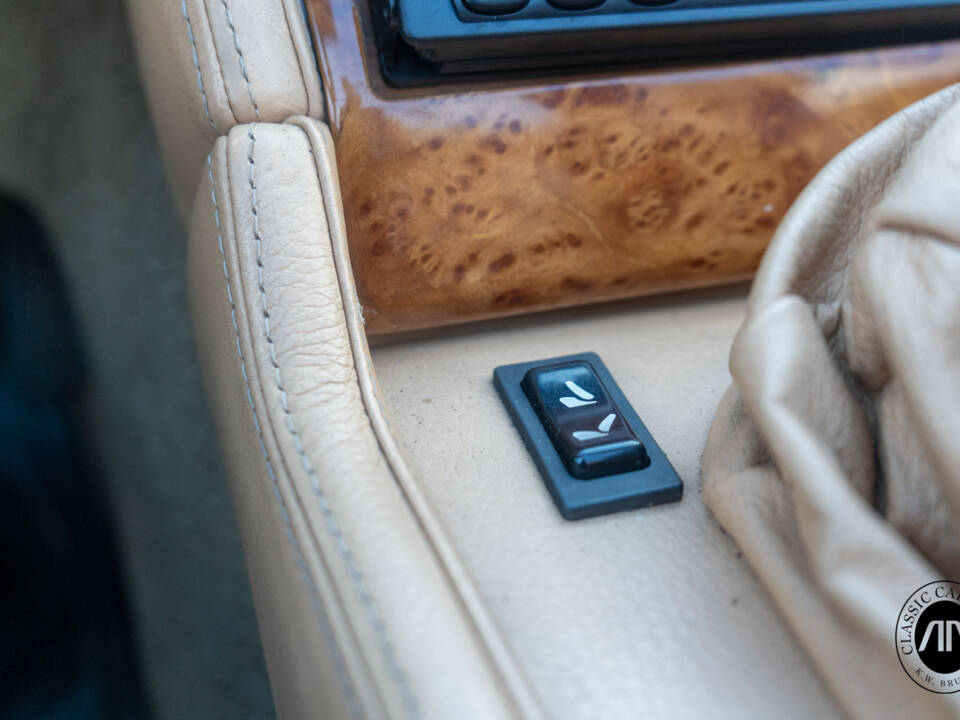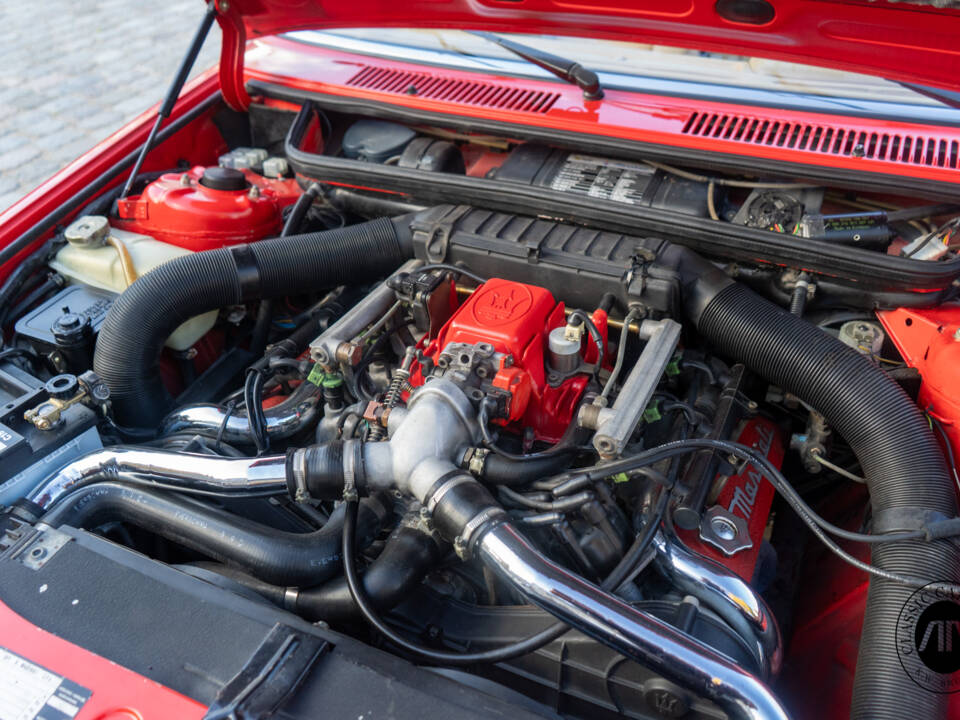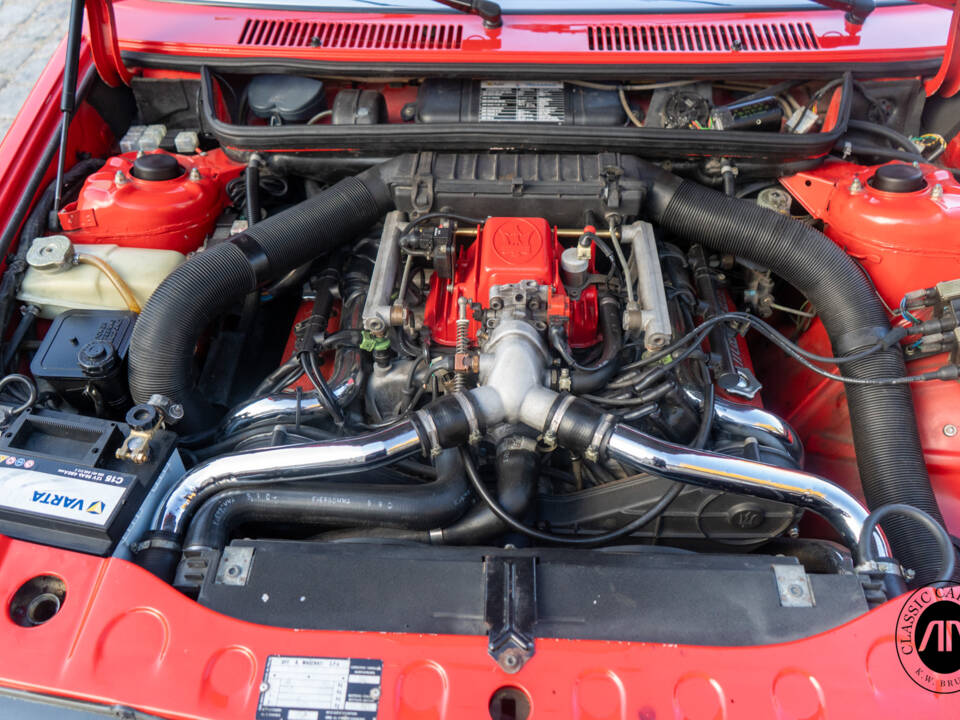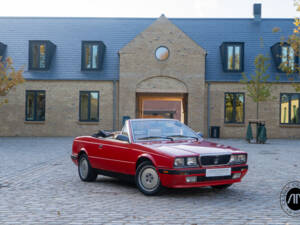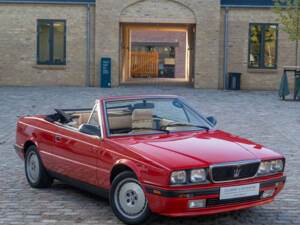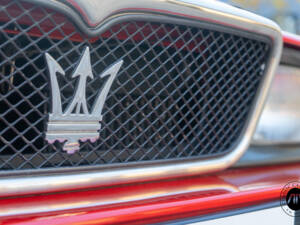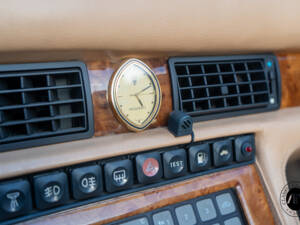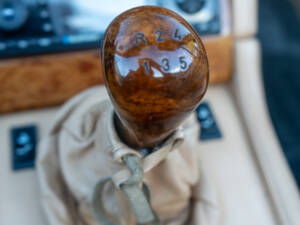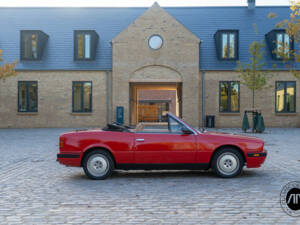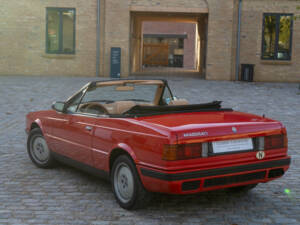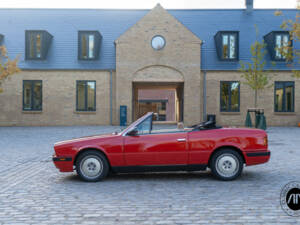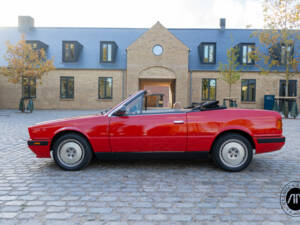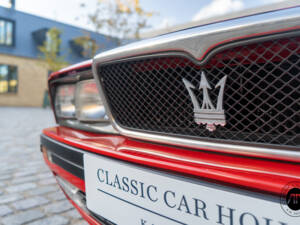1991 | Maserati Spyder
Descripción
The Maserati Biturbo is the world's first production engine with two turbochargers. - and it is also the first production car to have three valves per cylinder. cylinder. Passion for Italian thoroughbreds and cheeky Italian eighties design are among the main motivations that can make one buy a Biturbo, drawn by the brutal power of its supercharged V6. The Biturbo was developed under the watchful eye of company owner Alejandro de Tomaso. The intention is to produce a car that can function equally well as a daily utility vehicle and as a sports car when the owner is in the mood. Pierangelo Andreani uses the origami style for his designs – a style that is angular and angular and was introduced by Giugiaro and Gandini back in the late 1960s and 1970s. Funnily enough, Gandini is later hired to give the model a design lift in 1988 and 1991 to keep the styling up to date. After an unsuccessful period of Citroen ownership and a brief period under the Italian government agency, De Tomaso plans to build a "compact" five-seat coupe powered by a 2-liter V6 engine, with its power entrusted, to not one, which it was fashionable at the time, but two whole turbochargers. The engine retained the 90° V6 format from the previous Merak driven by a single overhead camshaft, with three valves per cylinder. cylinder, two intakes (one small and one larger, which together provide a swirling effect that increases combustion efficiency) and a single exhaust valve. This engine is fed by a single twin-choke Weber carburetor "blown" by two IHI turbochargers. The output reached 180 hp at 6000 rpm, which gives the car a decidedly sporty character. The stated performance figures are a top speed of 215 km/h and acceleration from 0 to 100 km/h in 6.5 seconds. The presentation to the press takes place, not coincidentally, on 14 December 1981 - coinciding with the 67th anniversary of the foundation of Officine Alfieri Maserati - while the presentation to the general public is reserved until the "showcase" at the Geneva Motor Show in March of 1982. Having created a number of sports cars under his own name, Alejandro De Tomaso never dreamed of being remembered as the creator of the most controversial model that has the trident on the grill. The former Argentine racing driver and entrepreneur gave Maserati a new lease of life with this model.
Mk. II "Zagato" Spyder comes in October 1989 re-designed and built by Zagato. It is equipped with the more powerful 2 liter V6 engine with the option of a four-speed automatic gearbox - this example, however, has the coveted manual 5-speed ZF gearbox. Visually, it is identified by black edges around the lights, a shorter grill and 15-inch alloy wheels. Year 1991 is the last of the Mk.II series and only a few hundred are produced before it is followed by the Mk.III Read km. 75,782
Detalles del vehículo
Datos del vehículo
- Marca
- Maserati
- Serie del modelo
- Biturbo
- Modelo
- Spyder
- Primera fecha de registro
- 1/1991
- Año de construcción
- 1991
- Kilometraje (leer)
- 75.000 km
- Número de chasis
- ZAM333B00LA102719
- Número de motor
- No provisto
- Número de la caja de cambios
- No provisto
- Coincidencia de números
- No
- No. de propietarios anteriores
- No provisto
Detalles técnicos
- Carrocería
- Convertible
- Potencia (kW/CV)
- 180/245
- Capacidad cúbica (cm³) - acerca de
- 1996
- Cilindro
- 6
- Puertas
- 2
- Manejo
- Izquierda
- Caja de cambios
- Manual
- Marchas
- 5
- Engranaje
- Trasero
- Freno delantero
- Disco
- Freno trasero
- Disco
- Combustible
- Gasolina
Configuración individual
- Color exterior
- Rojo
- Color interior
- Otros
- Material interior
- Cuero parcial
Condición, registro y documentación.
- Tiene peritaje
- Condición
- Informe de inspección del libro
- Matriculado
- Listo para conducir
Ubicación

Classic Car House Denmark
Emil Flambert
Kongevejen 79
2800 Kongens Lyngby
🇩🇰 Dinamarca
